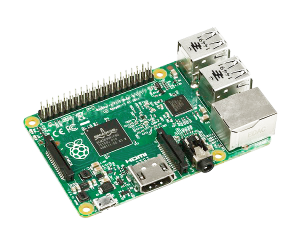
System on Chip Introduction: The Ultimate Guide to SoC
Global electronic component supplier AMPHEO PTY LTD: Rich inventory for one-stop shopping. Inquire easily, and receive fast, customized solutions and quotes.
What is a System on Chip?
A system on chip (SoC) is a type of integrated circuit (IC) that integrates all or most of the components of a computer or other electronic system onto a single chip. This includes the central processing unit (CPU), memory, input/output (I/O) ports, and often other components such as graphics processing units (GPUs) and radios.

History of SoC
The first SoC were developed in the early 1970s, but they were not widely used until the 1990s. The development of new semiconductor manufacturing technologies, such as complementary metal-oxide-semiconductor (CMOS) and high-density interconnect (HDI), made it possible to integrate more and more components onto a single chip. This led to a rapid increase in the popularity of SoC, and today they are used in a wide range of applications. Some of the most common applications for SoC include:
- Smartphones and tablets
- Wearable devices
- Cars
- Digital cameras
- TVs
- Routers
- Network switches
- Industrial control systems
SoC Architecture
The architecture of an SoC can vary depending on the application, but there are some common elements. These elements include:
- The CPU: The CPU is the central processing unit of the SoC. It is responsible for executing instructions and controlling the other components of the SoC.
- Memory: The SoC typically includes some form of memory, such as static random-access memory (SRAM) or dynamic random-access memory (DRAM). Memory is used to store data and instructions that are being used by the CPU.
- I/O ports: The SoC typically includes a number of I/O ports, such as USB, Ethernet, and HDMI. These ports allow the SoC to communicate with other devices.
- Other components: The SoC may also include other components, such as graphics processing units (GPUs), radios, and sensors. These components can be used to add additional functionality to the SoC.
Types of SoC
There are a number of different types of SoC, each with its own strengths and weaknesses. Some of the most common types of SoC include:
- Application-specific integrated circuits (ASICs): ASICs are custom-designed SoCs that are optimized for a specific application. ASICs offer the best performance and power efficiency, but they are also the most expensive type of SoC.
- System-on-a-chip modules (SoMs): SoMs are pre-fabricated SoCs that can be used to create customized systems. SoMs offer a good balance of performance, power efficiency, and cost.
- System-in-package (SiP): SiPs are SoCs that are packaged with other components, such as memory and I/O ports. SiPs offer a high degree of integration and are often used in applications where space is limited.
Benefits of SoC
SoC offers a number of benefits over traditional systems, including:
- Reduced size: SoC can be much smaller than traditional systems, which makes them ideal for portable devices.
- Reduced weight: SoC can also be much lighter than traditional systems, which is important for mobile devices.
- Reduced power consumption: SoC can consume much less power than traditional systems, which is important for battery-powered devices.
- Improved performance: SoC can often offer improved performance than traditional systems, thanks to the fact that they can integrate multiple components onto a single chip.
- Increased security: SoC can be more secure than traditional systems, as they can be designed to isolate different components from each other.
Challenges of SoC Design
The design of SoC can be challenging, as it requires the integration of a wide range of components. Some of the challenges involved in SoC design include:
- Complexity: SoC can be very complex, which can make it difficult to design and verify them.
- Cost: SoC can be expensive to design and manufacture, which can make them prohibitive for some applications.
- Time to market: SoC can take a long time to design and manufacture, which can make it difficult to bring them to market quickly.
SoC Security
SoC security is an important issue, as SoC can contain sensitive data and code. Some of the security challenges that SoC face include:
- Physical security: SoC can be physically attacked, which could allow attackers to gain access to sensitive data.
- Software security: SoC can be attacked through software vulnerabilities, which could allow attackers to gain control of the SoC.
- Firmware security: SoC can be attacked through firmware vulnerabilities, which could allow attackers to gain control of the SoC.
SoC Design Process
The SoC design process typically consists of the following steps:
- Requirements gathering: The first step is to gather the requirements for the SoC. This includes identifying the functionality that the SoC needs to provide, as well as the performance, power, and cost requirements.
- Architecture definition: The next step is to define the architecture of the SoC. This includes identifying the components that will be integrated onto the SoC, as well as the interfaces between these components.
- RTL design: The RTL design step involves the implementation of the SoC's functionality in a hardware description language (HDL).
- Verification: The verification step involves verifying that the SoC's functionality meets the requirements. This is typically done using simulation or emulation.
- Physical design: The physical design step involves the implementation of the SoC's layout. This includes placing and routing the components on the SoC's die.
- Manufacturing: The final step is to manufacture the SoC. This is typically done using a semiconductor fabrication plant (FAB).
System on Chip vs System in Package(SiP)
System on chip (SoC) and system in package (SiP) are both integrated circuits (ICs) that combine multiple components, but they have different architectures and are used in different applications. A SoC is a single chip that integrates all or most of the components of a computer or other electronic system. This includes the central processing unit (CPU), memory, input/output (I/O) ports, and often other components such as graphics processing units (GPUs) and radios. SoC are typically used in portable devices, such as smartphones and tablets, where size and power consumption are important considerations. A SiP is a package that contains multiple ICs that are interconnected. SiPs are typically used in applications where high performance or high reliability is required. For example, SiPs are often used in telecommunications and networking equipment. Here is a table that summarizes the key differences between SoC and SiPs:
| Feature | SoC | SiP |
| Architecture | Single chip | Package |
| Components | CPU, memory, I/O ports, other components | Multiple ICs |
| Applications | Portable devices, where size and power consumption are important | High performance or high reliability applications |
Here are some additional points to consider when comparing SoC and SiPs:
- SoC are typically more expensive than SiPs.
- SoC are typically more difficult to design and manufacture than SiPs.
- SoC typically offer better performance and power efficiency than SiPs.
- SiPs typically offer more flexibility than SoC.
The best choice for a particular application will depend on the specific requirements of that application. If size and power consumption are important, then an SoC may be the best choice. If high performance or high reliability is required, then an SiP may be the best choice. And you can see more pros and cons of SoC in System on Chips: Design, Applications and Future, then you can make a better choice.
Video related to System on Chip vs System in Package(SiP)
Conclusion
SoC is becoming increasingly important in a wide range of applications. They offer a number of advantages over traditional systems, including reduced size, weight, power consumption, and improved performance. However, the design of SoC can be challenging, and they face a number of security challenges.
Related Articles
- ·SoC vs SoM: What's the Difference?
- ·The Application of Embedded Electronics in the Field of Consumer Electronics
- ·The application of embedded systems in the field of automotive electronics
- ·The Rise of Chinese MCUs — 51 Series (STC, Nuvoton, WCH, Sinowealth, GD32, SOC, Corebai, On-Bright)
- ·What is the difference between SoC, FPGA, and ASIC?
- ·Understand the differences between CPU, GPU, IPU, NPU, TPU, LPU, MCU, MPU, SOC, DSP, FPGA, ASIC, GPP, and ECU
- ·What electronic components are soldered onto system on a chip boards?
- ·How to Choose the Right SoC for Your Application?
- ·System on Chip vs Network on Chip: What is the difference between SoC and NoC?
- ·Microprocessor vs. Microcontroller vs. System on Chip: What are the differences among them?
